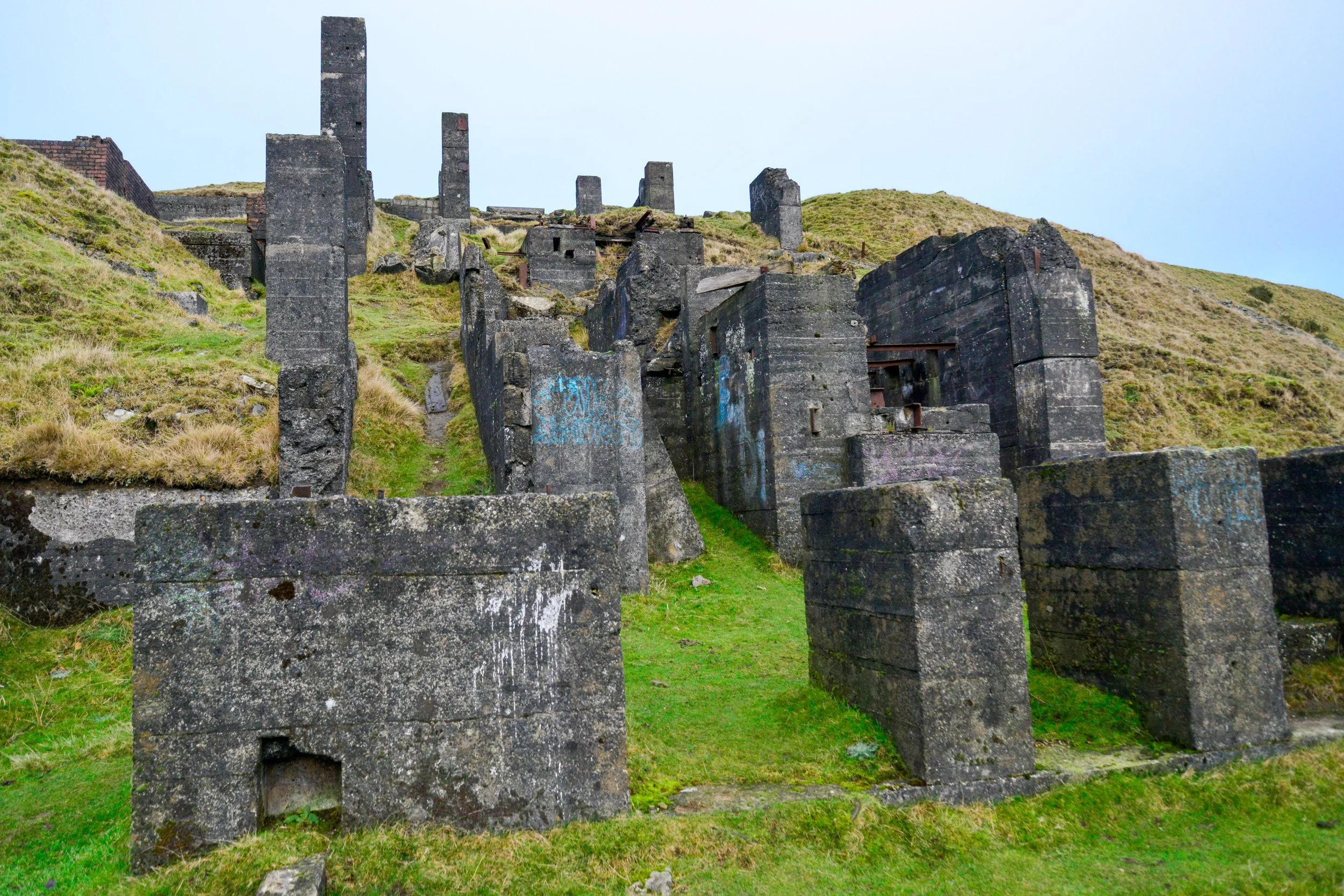
> TRAVEL FILES <
THE SIGN HUNTERS
@thesignhunters • #thesignhunters • #handfulsadventures • #apiginchina
ENGLAND: Magpie Quarry at Titterstone Clee Hill
Written by Laszlo, 27 July 2025
One of our most recent sign-hunting adventures was not actually planned as a sign-hunting mission at all. In fact, it is quite rare for us to head out with the sole intention of finding old quarry or industrial signage. This particular trip was all about geology—specifically, collecting dolerite. That is what led us to the weathered slopes of Titterstone Clee Hill and its long-disused Magpie Quarry.
The Clee Hills, a small range in south Shropshire, are part of the Shropshire Hills Area of Outstanding Natural Beauty. Titterstone Clee, the most prominent of them, stands as the third-highest point in the county. Its summit is windswept and treeless, with a strikingly bleak landscape that has been heavily shaped by more than a century of industrial activity. Much of what you see today—jagged edges, abandoned structures, and crushed stone underfoot—is a legacy of quarrying on an immense scale.
What makes Titterstone Clee particularly interesting is its geology. While the surrounding hills are primarily composed of sedimentary rocks like limestone, mudstone, and siltstone, Titterstone itself stands apart due to a rare geological feature: a dolerite intrusion. Dolerite is a coarse-grained, dark igneous rock, often rich in olivine, and closely related to basalt. This makes the hill a magnet for amateur geologists and rock collectors, as dolerite does not appear in many places in the region.
Though commercial quarrying at Titterstone Clee has mostly ceased, some extraction continues on a smaller scale today. But it is the relics of the past that capture the imagination—silent concrete shells, rusted rails, and broken buildings. Magpie Quarry, once an active site for dolerite extraction, now lies dormant but accessible. Visitors are free to explore the remains, making it an ideal destination for those interested in the intersection of natural history and industrial heritage.
Our visit yielded more than just geological samples. While clambering through the remains of the Magpie site, we stumbled upon an old, weathered sign tucked behind a stone outcrop—exactly the kind of forgotten fragment of history we love to find. It was a reminder that even when the main mission is rocks, the signs of the past are never far away.





























